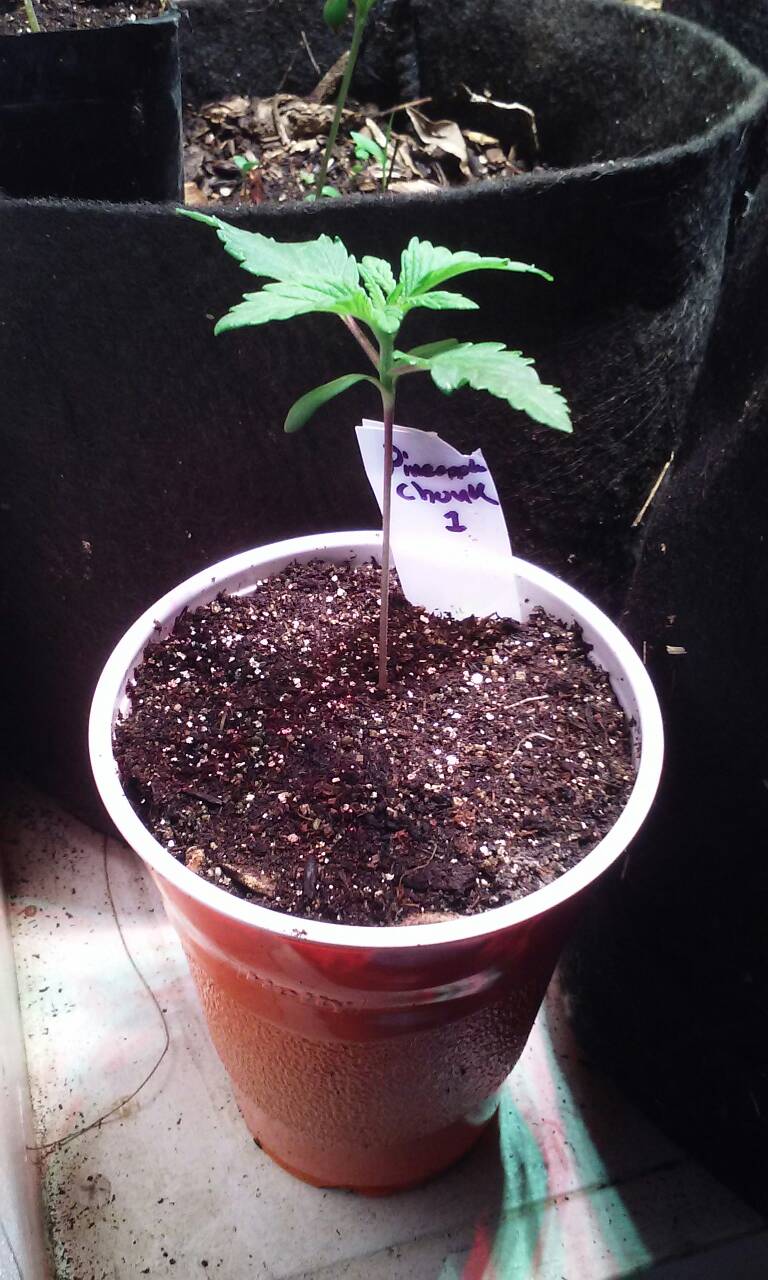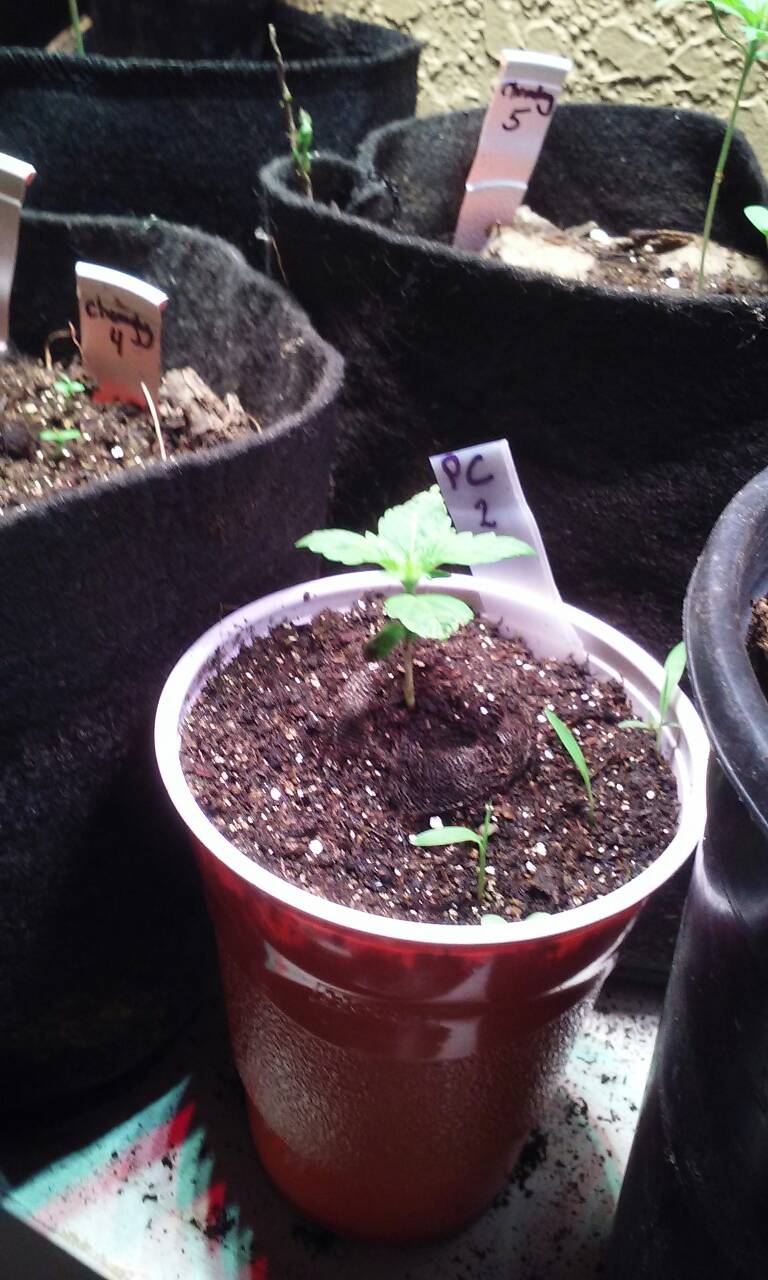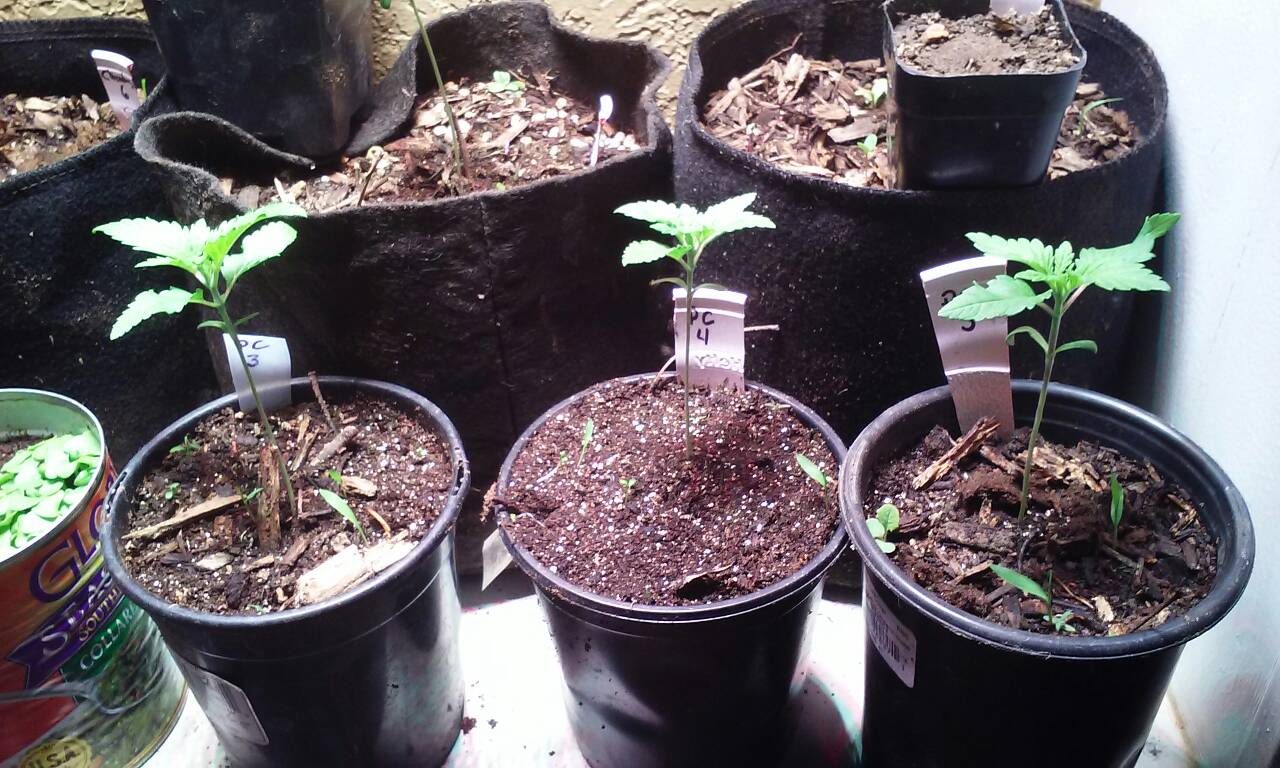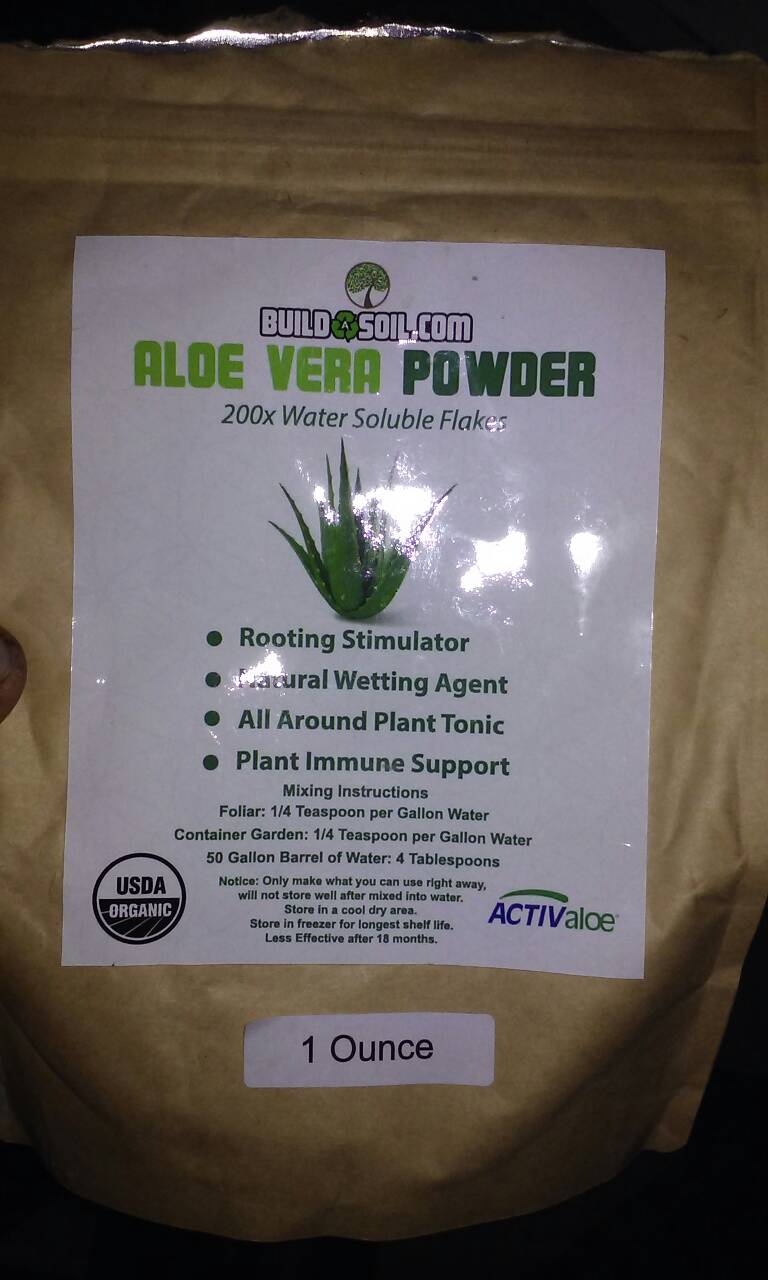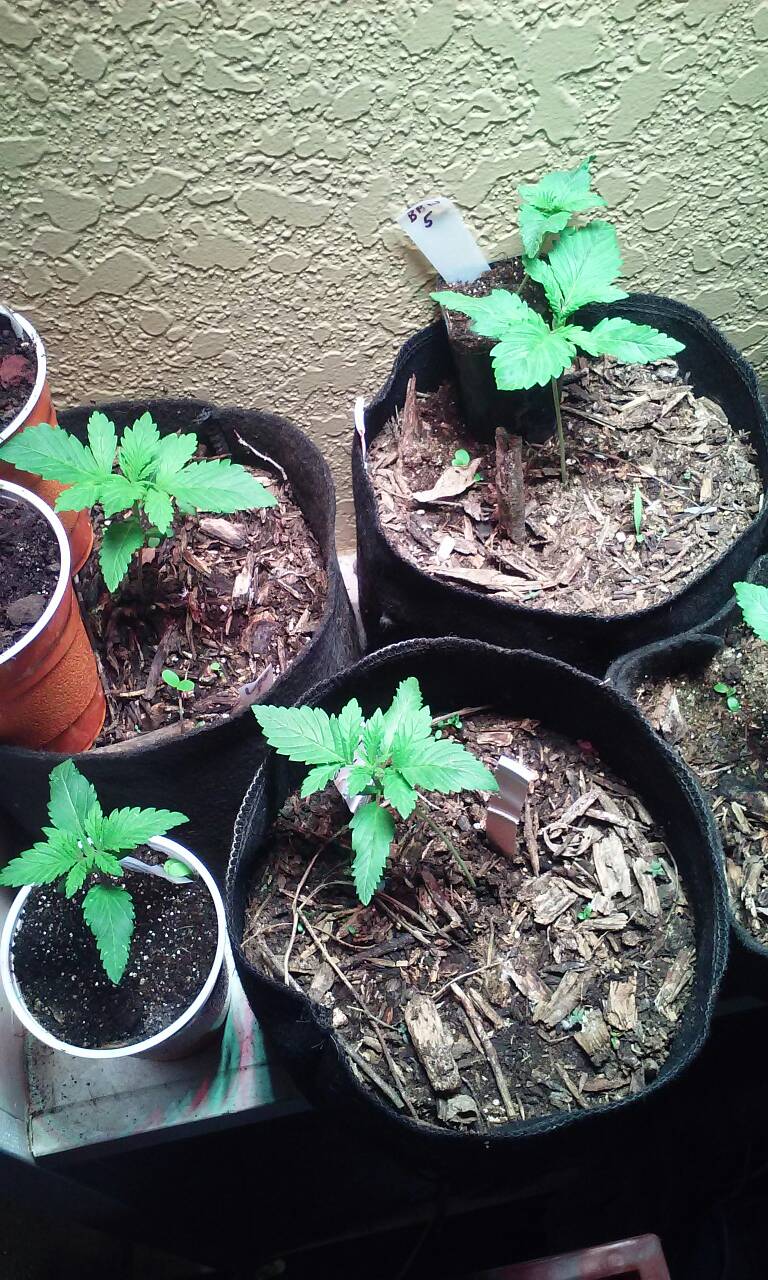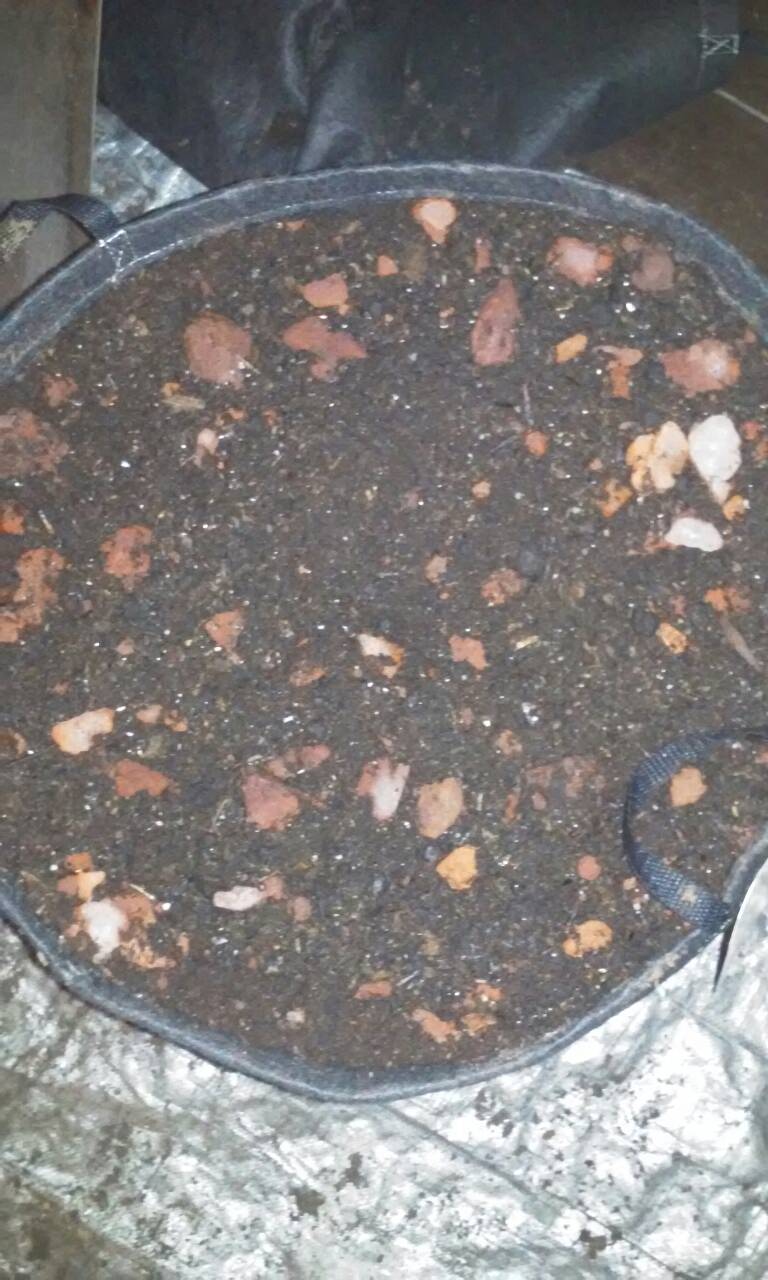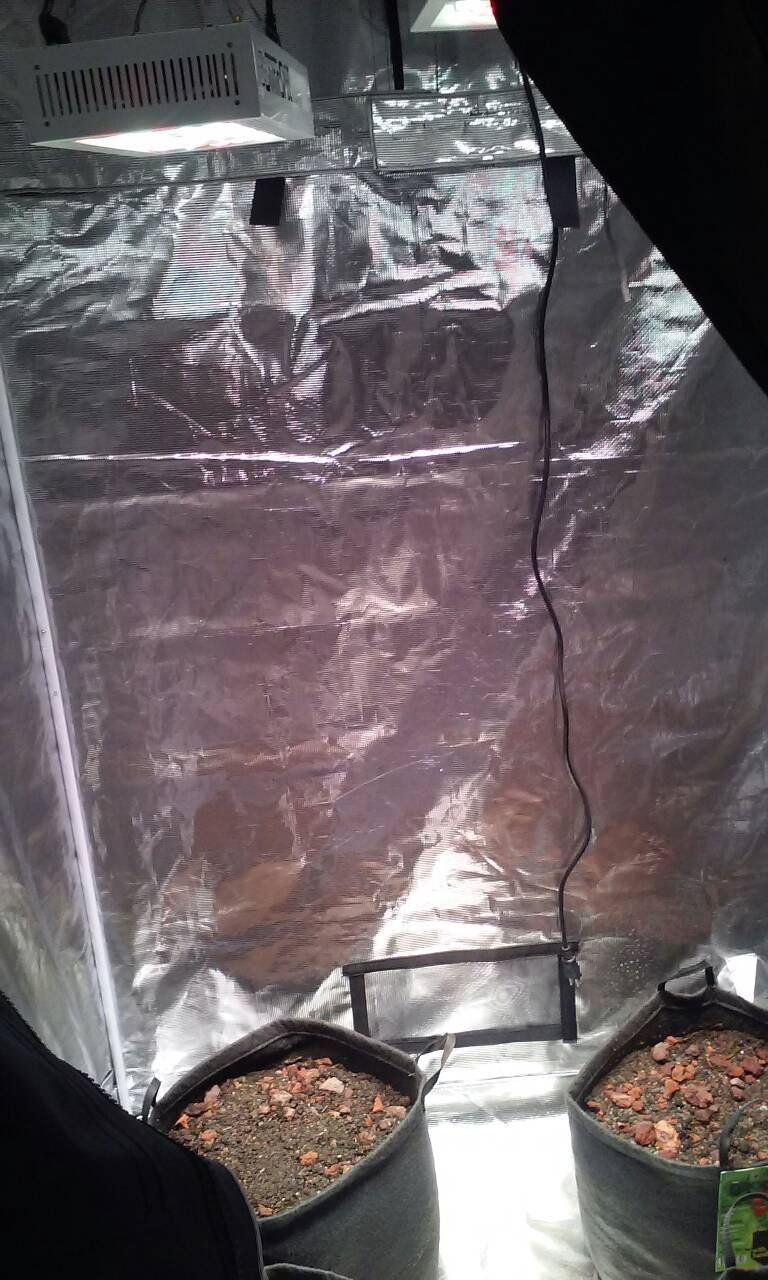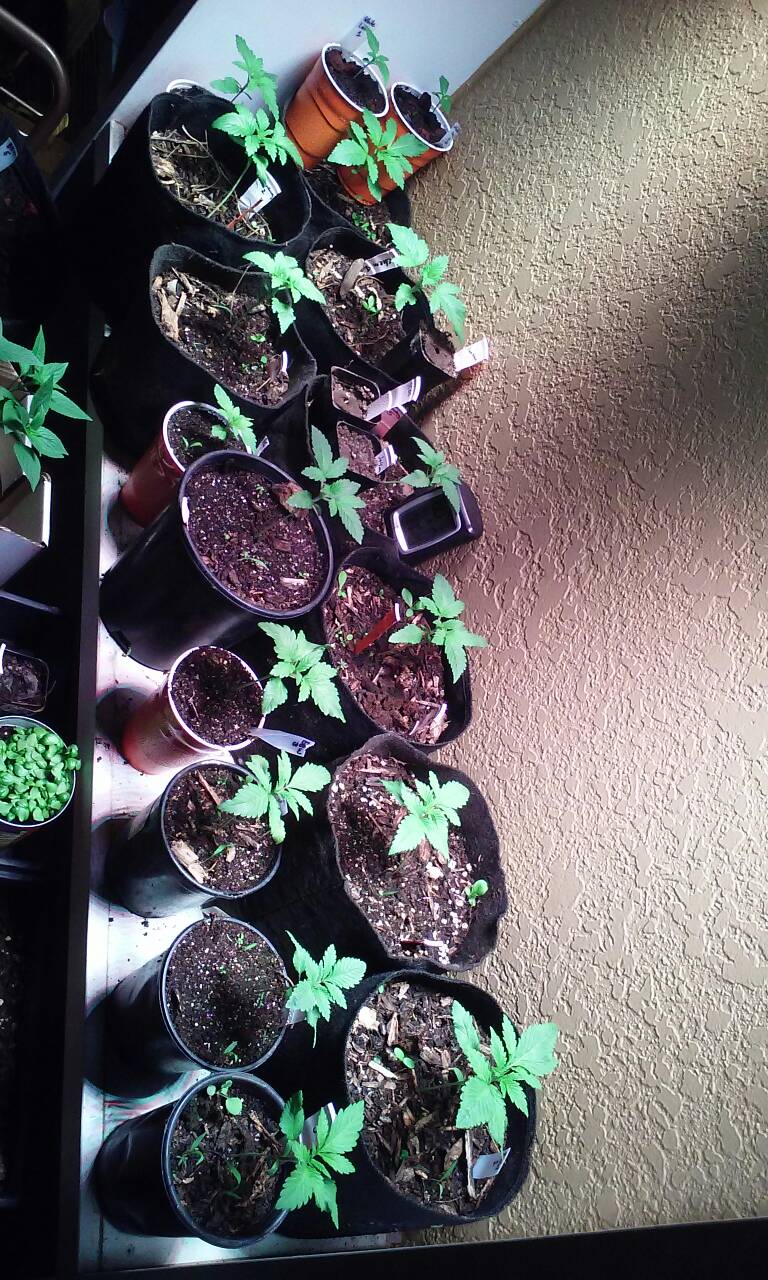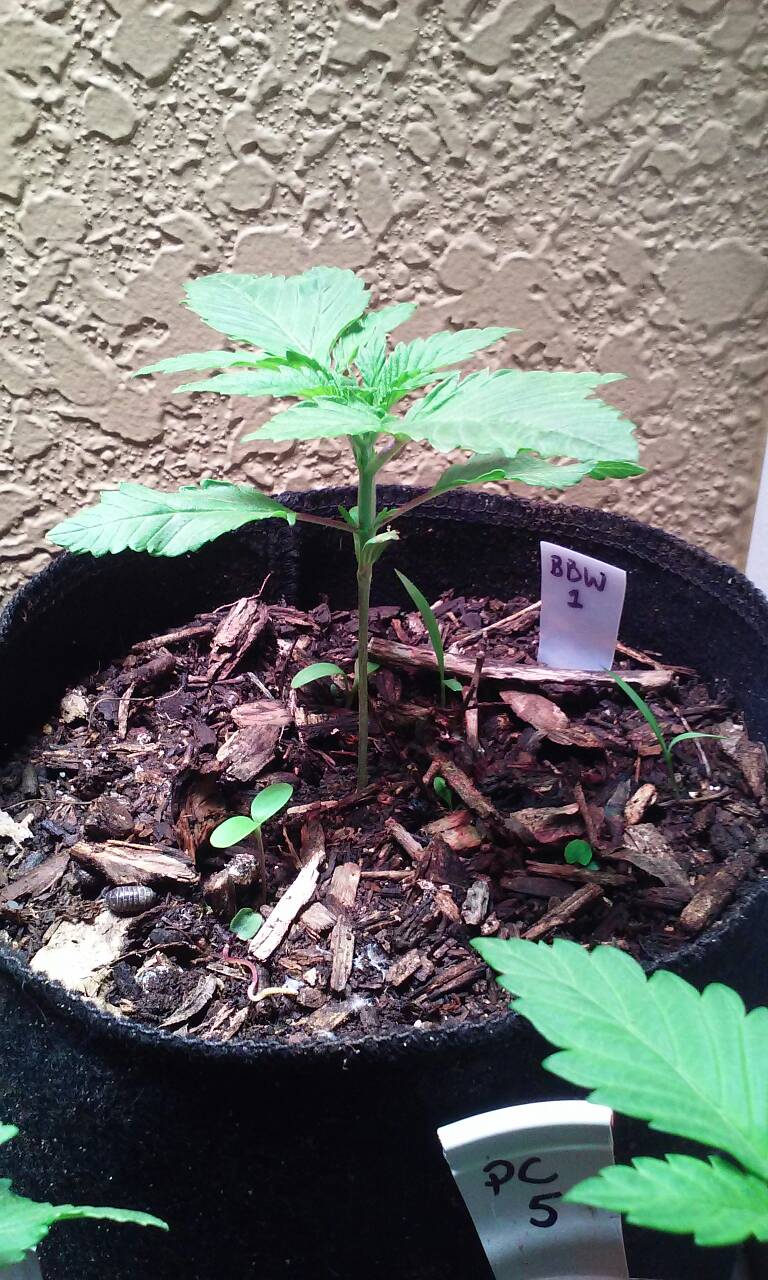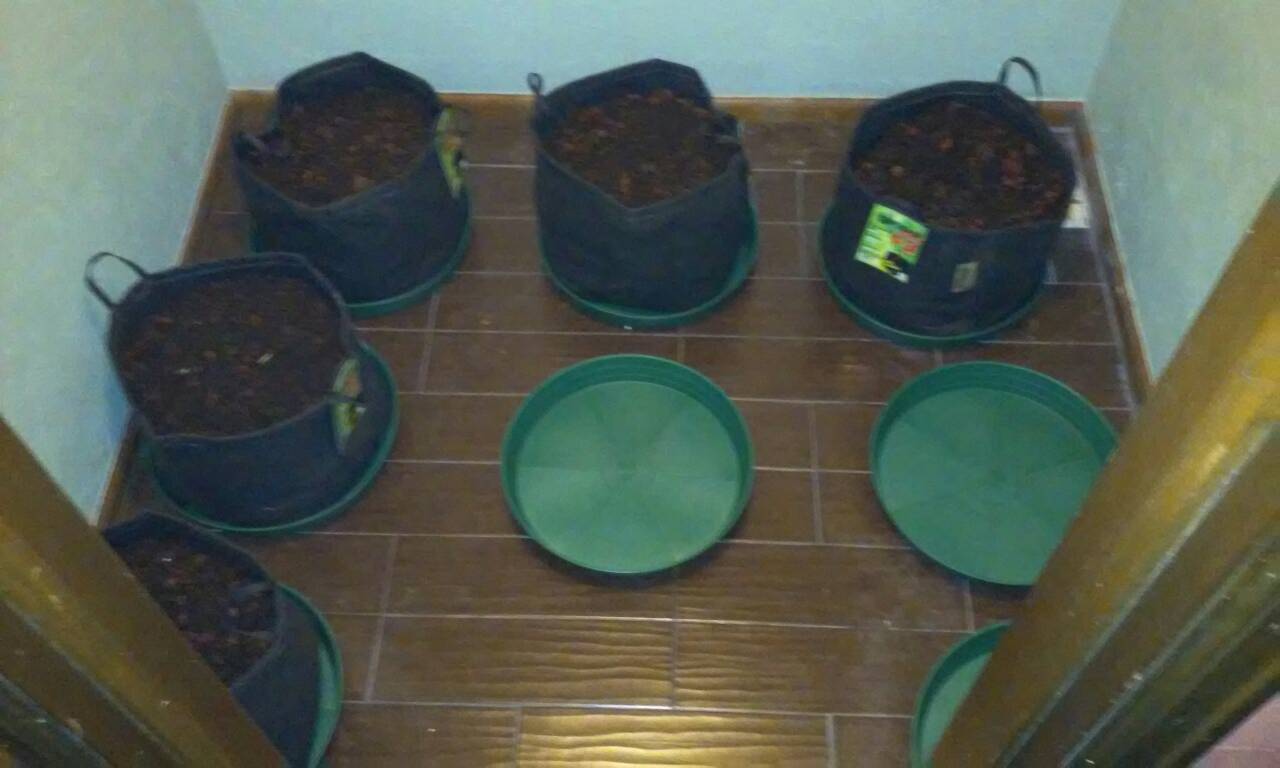Prepper420
New Member
Hello 420Mag!! I'm Prepper420, here to share my organic LED grow!! I am vegging 6x Chemdawg, 5x Bluebell Wreck, 5 Pineapple Chunk under AMARE Technologies_High Intensity LED with Enhanced White-Light SS150 with Cree upgrade, awesome for flowering too if needed. For flower I will be using 4x SE250's in a 5'x6' closet. 6" fan/filter for exhaust. 10Gal Geopots will be the final pot size.
Seedlings
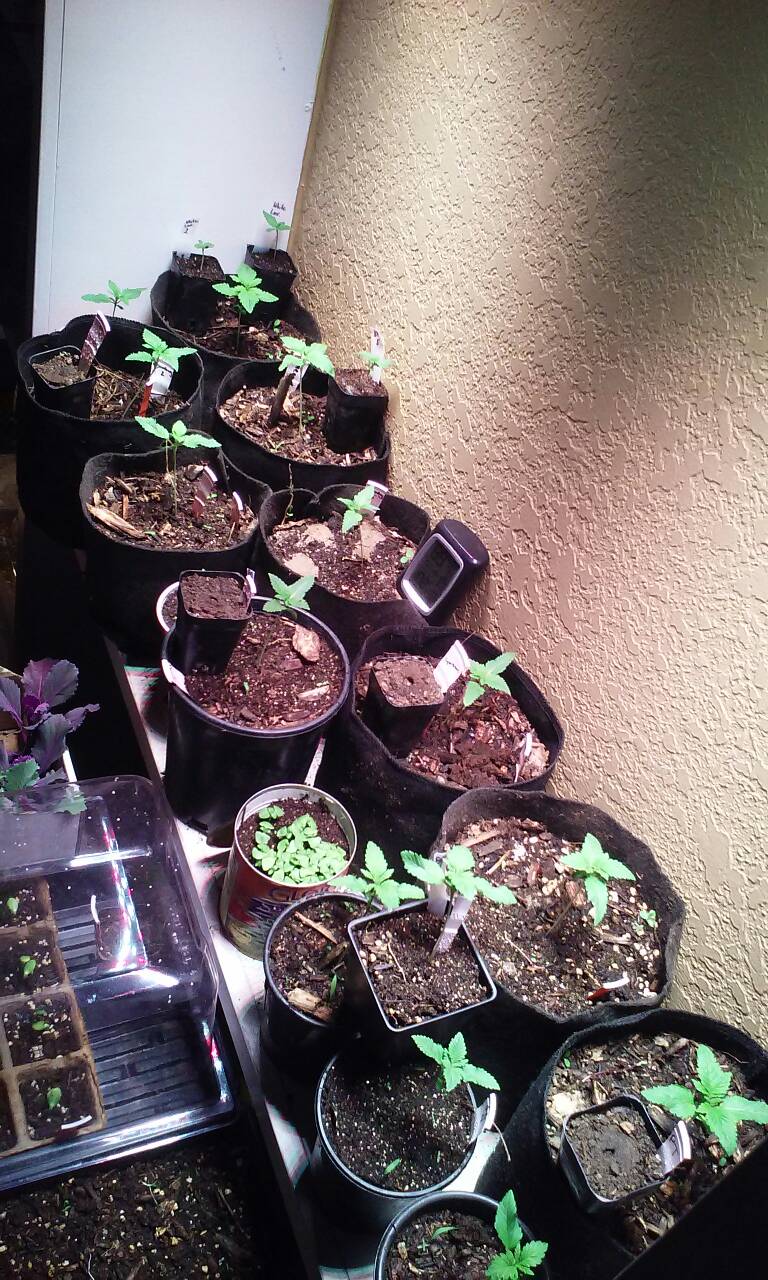
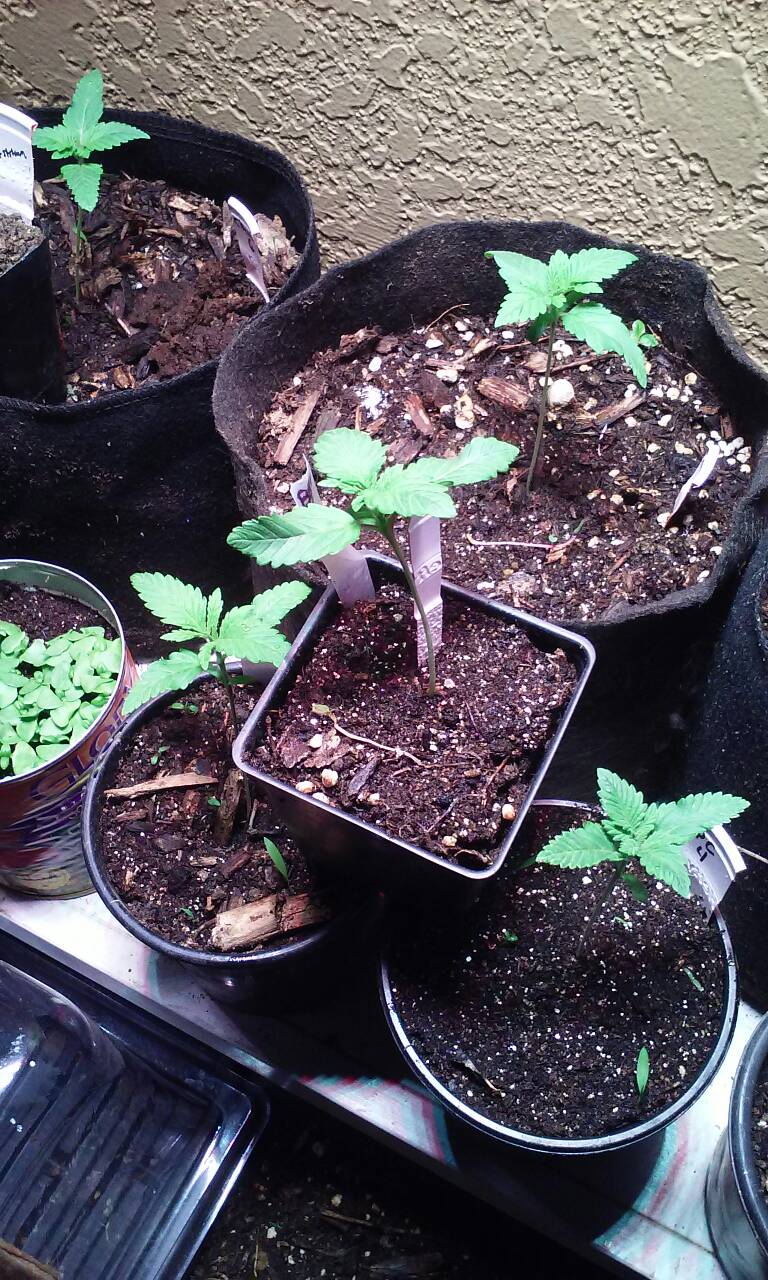
SS150

Mixing up soil over the course of a few days, so have my mix seperated up until I had everything.
Mix is:
1/3 Canadian Spaghnum Peat Moss
1/3 Quality Compost
1/3 Lava Rocks
10gals Bio-char
Amendments: Clackamas Coot Nutrient Mix with Minerals
Compost is: composted cow manure.
I think that's everything for now!
Seedlings


SS150

Mixing up soil over the course of a few days, so have my mix seperated up until I had everything.
Mix is:
1/3 Canadian Spaghnum Peat Moss
1/3 Quality Compost
1/3 Lava Rocks
10gals Bio-char
Amendments: Clackamas Coot Nutrient Mix with Minerals
Compost is: composted cow manure.
I think that's everything for now!




